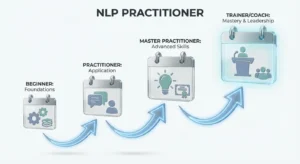Imagine putting your heart into a big project—working late, going the extra mile—only for it to go unnoticed. No acknowledgment, no appreciation. Over time, this lack of recognition can drain anyone’s motivation and satisfaction. Sadly, this happens too often in today’s fast-paced work environments.
Employee recognition goes beyond a simple pat on the back. It’s about showing genuine appreciation for hard work. As competition for top talent grows, recognizing your team has never been more important. Companies with strong recognition programs see a 31% lower turnover rate, showing that employees who feel valued are more engaged and committed to success.
In this article, we’ll explore why recognition is a game-changer and how making it a priority can transform your workplace for the better.
The Psychological Impact of Recognition
At the core of every workplace is a basic human need: the desire to feel appreciated. When employees receive recognition, it taps into this need, boosting their sense of purpose and belonging. This appreciation directly impacts motivation, pushing employees to perform at their best.
Recognition drives morale by reinforcing that hard work matters. Studies show that when employees are consistently recognized, they are more satisfied with their jobs and tend to put in extra effort. This leads to real, measurable outcomes—higher productivity, better performance, and improved workplace dynamics.
By understanding how recognition influences behavior, organizations can create a culture where appreciation drives both personal and collective success.
The Business Case for Recognition
In today’s competitive business landscape, employee recognition is not just a feel-good strategy—it’s a strategic necessity. A well-designed recognition program boosts morale and enhances performance, retention, and company culture. When employees feel valued, they are more engaged, productive, and loyal.
Why Companies Should Invest in Recognition Programs
Investing in recognition not only improves morale but also leads to tangible business outcomes. Valued employees are more motivated, leading to a 20% increase in productivity and up to 31% lower turnover rates. This reduces the costs of hiring and training while fostering loyalty and long-term commitment to the organization.
Tangible and Intangible Returns of Recognizing Employees
Recognition brings immediate benefits, such as higher performance and stronger retention. It also cultivates an engaged, collaborative workforce. The intangible returns—like increased trust, morale, and team cohesion—are essential for creating a thriving, long-term work environment.
Forms of Employee Recognition
Recognition can take various forms, each serving a unique purpose in engaging employees and boosting morale. Whether it’s informal, formal, or peer-to-peer recognition, every form plays a vital role in cultivating a positive work culture.
Informal Recognition: Quick Wins for Everyday Motivation
A simple “thank you” or a public shout-out can have a significant impact on employee morale. Informal recognition doesn’t require elaborate planning, but its effects are immediate. Real-time feedback shows employees that their efforts are noticed, creating an ongoing loop of motivation and positive reinforcement.
Benefits of Informal Recognition:
- Real-Time Feedback: Shows employees their efforts are valued instantly.
- Cost-Effective: Requires no formal systems, just genuine appreciation.
- Boosts Daily Morale: Keeps employees motivated and engaged.
Formal Recognition Programs: Rewarding Excellence on a Bigger Scale
Structured programs like “Employee of the Month” or performance-based awards offer long-term motivation. Tangible rewards, such as bonuses or extra vacation days, create clear incentives for employees to strive for excellence.
Benefits of Formal Recognition:
- Long-Term Motivation: Tangible rewards encourage sustained effort.
- Consistency: A structured program ensures recognition is routine.
- Clear Impact on Performance: Rewards align with business goals, driving performance.
Peer-to-Peer Recognition: Building a Collaborative Culture
Empowering employees to recognize each other fosters mutual respect and teamwork. Peer-to-peer recognition builds stronger team bonds and creates a sense of collective ownership over success.
Benefits of Peer-to-Peer Recognition:
- Strengthens Team Bonds: Encourages appreciation among colleagues.
- Fosters Collaboration: Reinforces the value of teamwork.
- Empowerment: Enables employees to acknowledge each other’s efforts, building mutual respect.
The Importance of a Blended Approach
Combining informal, formal, and peer-to-peer recognition creates a well-rounded strategy that touches all aspects of employee engagement. Informal recognition boosts daily morale, formal programs provide long-term motivation, and peer-to-peer recognition enhances collaboration. Together, these approaches create a thriving work culture where employees feel valued and motivated, driving both immediate and sustained success.
Benefits of Employee Recognition
In today’s fast-paced work environment, employee recognition is more than just a feel-good gesture—it’s a critical component of any successful organization. When employees feel appreciated, it impacts every aspect of their work, from productivity to team collaboration.

Recognition helps:
- Boost Productivity and Engagement
- Foster a Positive Workplace Culture
- Retain Top Talent and reduce turnover
- Strengthen Employee Loyalty
1. Improved Productivity and Engagement
Recognition is a powerful motivator that enhances both productivity and engagement. When employees know their hard work is being acknowledged, they feel more driven to perform at higher levels. Recognition provides a sense of purpose, boosting focus and encouraging employees to consistently deliver their best work.
2. Positive Workplace Culture and Teamwork
Recognition fosters a positive workplace culture where employees feel appreciated and valued. Acknowledging individual and team achievements builds trust and strengthens relationships, encouraging collaboration. This creates a supportive environment where employees are motivated to help one another and work together toward shared goals.
3. Increased Employee Retention and Reduced Turnover
One of the most significant benefits of employee recognition is its ability to retain top talent. Employees who feel valued are more likely to stay with the company, reducing turnover and the associated costs of recruiting and training new hires.
4. Enhanced Loyalty and Commitment to the Company
Recognition strengthens the bond between employees and the company, fostering a deeper sense of loyalty. When employees are appreciated for their contributions, they become more committed to the organization’s success. This loyalty translates into greater dedication and willingness to go the extra mile, ultimately driving long-term success for the business.
Recognition Frequency: The Key to Lasting Impact
While recognizing employees is essential, the frequency of recognition plays a significant role in how impactful it is. Too little recognition can lead to employees feeling undervalued, while too much can dilute its meaning, making it feel forced or insincere. Striking the right balance ensures that recognition remains both meaningful and motivating.
Frequent, Meaningful Recognition
For informal praise, frequent recognition—even daily feedback—can be incredibly effective. Simple gestures like a quick “thank you” for small contributions or a public acknowledgment during team meetings can boost morale and keep employees engaged. Regular, real-time feedback allows employees to understand their value in the moment, reinforcing positive behavior and keeping motivation high.
Structured Recognition for Significant Achievements
On the other hand, formal recognition programs are better suited for larger milestones or exceptional performance. Quarterly or annual awards for outstanding contributions offer a sense of anticipation and significance, celebrating achievements without overdoing it. These formal recognitions, such as “Employee of the Year” or performance-based bonuses, should be reserved for accomplishments that have a lasting impact on the company’s success.
Finding the Right Balance
The key is to combine frequent informal recognition with periodic formal rewards. Informal feedback helps maintain ongoing motivation, while formal awards serve to celebrate major milestones and contributions. This balance ensures that recognition feels authentic, timely, and aligned with the level of achievement, keeping employees both motivated and appreciative of the acknowledgment they receive.
By maintaining this balance, organizations can create a culture of continuous recognition without diminishing its value, ensuring that every “thank you” or award feels deserved and meaningful.
Recognition in Remote Work Settings
As remote and hybrid work models become more common, companies must adapt their recognition strategies to ensure that all employees, regardless of location, feel valued and appreciated.
Challenges
Remote employees often face unique challenges, such as feeling isolated or less visible compared to their in-office counterparts. This can lead to a sense of being overlooked, especially when recognition is more informal or happens spontaneously in physical office spaces.
Solutions
- Leverage Virtual Recognition Tools: Platforms like Slack, Microsoft Teams, and Bonusly can be used to publicly recognize achievements in real-time, ensuring all employees are acknowledged, no matter where they work.
- Host Virtual Celebrations: Organize virtual events like “employee of the month” shout-outs, team recognition meetings, or company-wide celebrations to highlight milestones and achievements, fostering a sense of community among remote workers.
- Incorporate Recognition in Regular Communications: Include mentions of remote employees’ contributions in company newsletters, emails, and virtual meetings. Regular recognition during these touchpoints reinforces inclusivity and helps remote staff feel connected to the broader organization.
By adapting recognition strategies to the remote environment, companies can ensure every employee feels valued and motivated, regardless of their physical location.
Leveraging Technology for Employee Recognition
Using technology for employee recognition helps streamline and enhance the process, making it easier to appreciate and reward your team consistently.

Tracking and Automating Recognition
With tools like Workhuman or Kazoo, recognition can be automated, ensuring that milestones and achievements are celebrated promptly and fairly. This reduces the risk of anyone being overlooked and ensures consistent recognition across the board.
Customizable Rewards
Platforms like Bonusly and Reward Gateway allow employees to choose rewards that matter to them, from gift cards to experiences. This personalization makes recognition more meaningful and boosts engagement.
Standardization for Global Teams
For larger or remote teams, platforms like Kudos ensure that recognition is consistent, regardless of location, creating an inclusive culture where everyone feels valued.
By integrating recognition technology, companies can make their efforts more efficient, personalized, and scalable, ensuring no one is left out.
Key Indicators of Effective Recognition Programs
To truly understand the impact of an employee recognition program, it’s important to measure the outcomes. By tracking specific metrics, organizations can gauge whether their recognition efforts are translating into real results.
Key Metrics:
- Employee Feedback: Regular surveys can provide insights into how employees perceive recognition efforts.
- Retention Rates: A decrease in turnover, especially among high performers, indicates the program’s success.
- Performance Metrics: Increased productivity and innovation signal that employees feel motivated to contribute.
The Ripple Effect: Recognition as a Driver of Organizational Success
When recognition becomes an integral part of a company’s culture, its impact extends far beyond individual employee motivation. Consistent acknowledgment of hard work fosters an environment of innovation, where employees feel empowered to contribute new ideas without fear of going unnoticed.
Over time, a recognition-focused culture strengthens the company’s brand, helping it attract top talent and retain skilled employees. Businesses known for valuing their employees position themselves as great places to work, boosting recruitment efforts and long-term reputation
Conclusion
Employee recognition is a powerful driver of performance, engagement, and retention. Valued employees are more motivated, productive, and loyal, contributing to a positive workplace culture and long-term success. Now is the time for businesses to act. Assess your recognition efforts and take immediate steps to improve them—whether through simple gestures or formal programs.
By prioritizing appreciation, you’ll not only retain top talent but also fuel sustainable growth and innovation. Start today and see the difference recognition makes.





